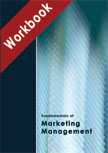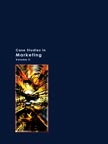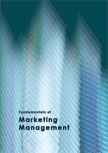Unilever in India: Managing Brand Extensions |
ICMR HOME | Case Studies Collection
» Marketing Case Studies Collection Please note: This case study was compiled from published sources, and is intended to be used as a basis for class discussion. It is not intended to illustrate either effective or ineffective handling of a management situation. Nor is it a primary information source. |
||
IntroductionIn 2005, Hindustan Lever Limited (HLL), the Indian subsidiary of Unilever, was the country's largest fast moving consumer goods (FMCG) company. HLL's portfolio of brands included Lux, Lifebuoy, Liril, Surf, Ponds Vaseline, Vim, Clinic All Clear and Axe. Most of these brands had been market leaders for several years in their respective product categories. Over the years, HLL had extended many of its popular brands with varying degree of success. Some extensions like Clinic All Clear anti-dandruff shampoo to hair oil category had been successful, while others like Ponds Toothpaste had been a dismal failure.
In 2003, in what seemed to be in response to intensifying competition in several segments, HLL decided to strengthen its already overwhelming presence in the talcum powder category where its brand, Ponds Dreamflower, was already the market leader. HLL also extended Lifebuoy, Vaseline and Fair& Lovely to Talc category. Senior HLL executives wondered if these brand extensions would yield the benefits they promised. Was HLL better off launching new brands? Background NoteHLL, a 51% subsidiary of the Anglo-Dutch conglomerate, Unilever, had acquired a tremendous reputation as one of India's best-managed companies. Despite being the subsidiary of an MNC, HLL was perceived to be more Indian than foreign, in the way it managed its operations. HLL operated with considerably more autonomy than other subsidiaries in the Unilever system. HLL's origin went back to 1885 when the Lever Brothers set up 'William Hesketh Lever', in England. In 1888, Lever Brothers entered India by exporting 'Sunlight', its laundry soap. Unilever in India: Managing Brand Extensions - Next Page>>
1] www.geocities.com/vedbsen/pw-brand-extension.htm |
Case Studies Links:-
Case Studies,
Short Case Studies,
Simplified Case Studies.
Other Case Studies:-
Multimedia Case Studies,
Cases in Other Languages.
Business Reports Link:-
Business Reports.
Books:-
Textbooks, Work Books, Case Study Volumes.



